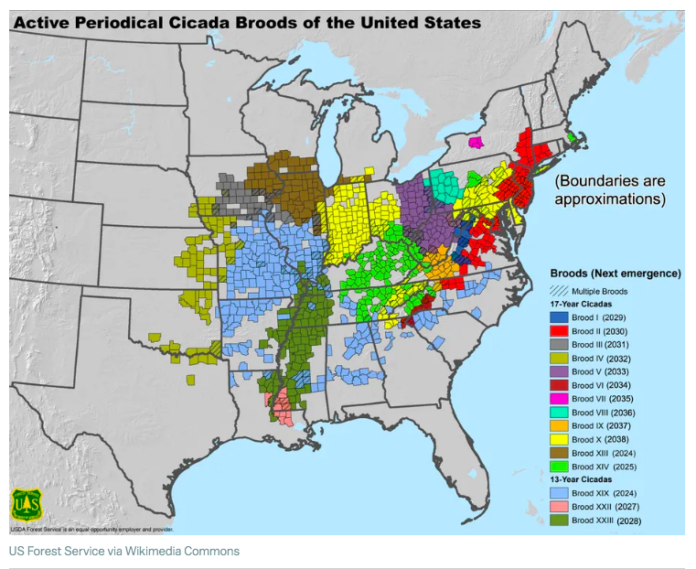They’re ugly and ooky, and their beady red eyes are spooky. Yep, they’re coming. Thirteen-year Brood XIX cicadas will be digging themselves out of the earth in Tennessee this spring to fill the air with their incessant chirping.
Dormant for the last 13 years, the only reason cicadas come out of the earth is to mate. The screeching is the sound that the males make to get their females’ attention. Once they mate, the females cut into tree branches, lay eggs and then die. Once the babies are born, they drop into the ground and disappear for another 13 years.
The brood of cicadas coming out in 2024 are known as periodical cicadas. There is a 17-year brood of cicadas expected in 2025. This type of cicada arrives in the millions. Per acre. Cicadas are defined by brood numbers based on the different years in which they emerge. These two broods are expected to have heavy concentrations in Middle and West Tennessee.
“The adults live about six weeks, so you can expect them to be gone by the end of June,” said Dr. Jerome Grant, professor of biological control and integrated pest management with the University of Tennessee Institute of Agriculture, in an article by the Municipal League. “You get a few numbers in early May and few in late June, but you may have a four-week period with high numbers in between.”
Cicadas will not come out of the ground until the ground temperature is about 64 degrees at least four inches deep. A cold spell can push back the arrival. Extended cold spells can keep them from emerging at all. The cicadas are expected to start appearing in late April through the first or second week of May across 15 states, mostly in the South, Floyd Shockley, an entomologist and the collections manager for the Department of Entomology at the National Museum of Natural History told NPR.
While they are basically harmless, their egg laying can kill branches on new trees, and a pet can get an upset stomach if they eat too many.
To avoid having harm come to new tree plantings, Grant suggests not planting until July. If planting new plants in the spring, they can be covered in mesh to keep the cicadas off. Fruit trees, hickory, oak and dogwoods are cicadas’ favorite place to lay eggs.
Cicadas feed underground on the roots of trees, but Grant doesn’t see them as pests. He sees them as aerators when they are underground; food for many animals when above ground and natural tree pruners; and their bodies provide a lot of nitrogen, minerals and nutrients back into the soil.
Having the two types of broods emerging back to back will be happening for the first time in 200 years, according to Tennessee Tech University professor Douglas Airhart in an article on reddit.com.
“Brood XIII and Brood XIX co-emerge every 221 years, according to Cicada Mania. The site says the last time the two broods co-emerged was in 1803, the same year as the Louisiana Purchase,” reported WSMV Nashville. “Of the two, Brood XIX will arrive in Tennessee this spring. The only place the two broods are known to overlap are in or near Springfield, Illinois, according to the website.”
Fox News reports that the 13-year group, Brood XIX, is shown in light blue on the map at the top of this article, provided by the U.S. Forest Service. Brood XIX is also expected to emerge in spring of 2024 in Alabama, Arkansas, Georgia, Illinois, Indiana, Kentucky, Louisiana, Missouri, Mississippi, North Carolina, Oklahoma, South Carolina and Virginia, according to Cicada Mania.


























